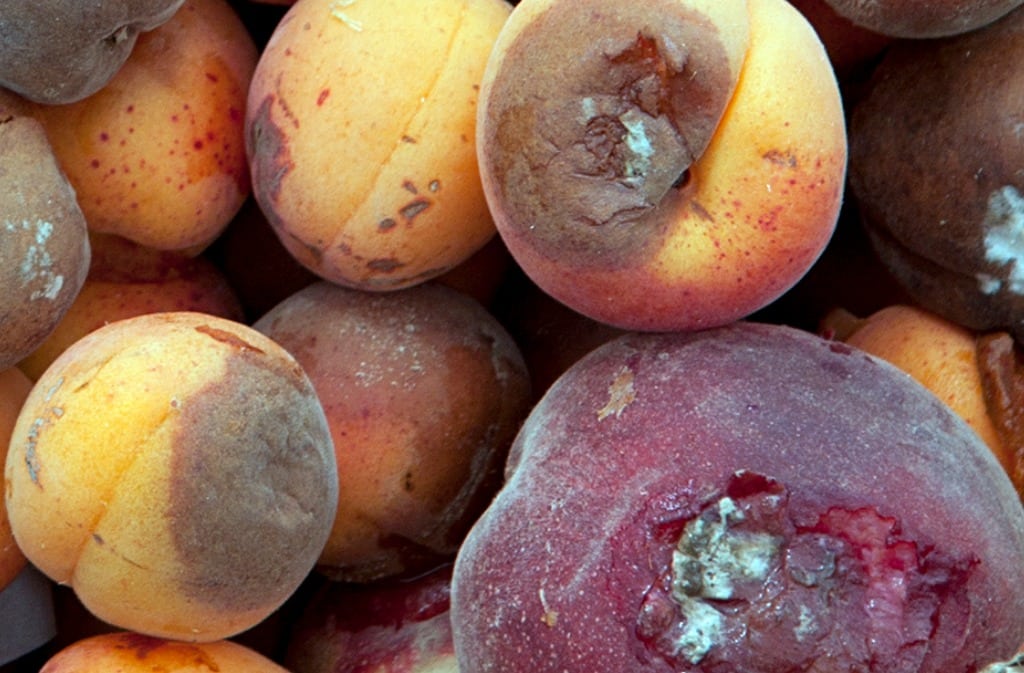Rhizopus Apricot Control: Treating Apricots With Rhizopus Rot


Rhizopus rot, also known as bread mold, is a serious problem that can affect ripe apricots, particularly after harvest. While it can be devastating if left untreated, apricot rhizopus rot is relatively easy to prevent. Keep reading to learn more about what causes apricot rhizopus rot and how to control it.
What Causes Apricot Rhizopus Rot?
Rhizopus rot of apricot trees is a fungal disease caused by the fungus Rhizopus stolonifer. It affects stone fruits such as peaches, nectarines, and apricots, and it most commonly strikes when fruit is ripe, often after it has been harvested or allowed to get overly ripe on the tree. The fungal spores live and thrive in debris on the orchard floor, especially in rotting, fallen fruit. Over the course of the growing season, spores will build up and eventually become airborne, spreading through the fruit on the tree. The fungus spreads most quickly in wet, warm conditions, with an ideal temperature of 80 F. (27 C.).
Recognizing Rhizopus Rot of Apricot Symptoms
Early signs of rhizopus rot are small, brown lesions that quickly darken to black and produce fluffy, whiskered strands that spread across the surface of the fruit and darken from white to gray to black over time. Rhizopus is similar in appearance to brown rot, another disease that plagues apricots. Unlike those with brown rot, however, apricots with rhizopus rot will easily slough their skin off if finger pressure is applied. This is a good tip for diagnosing the two diseases correctly.
Rhizopus Apricot Control
Since rhizopus rot only affects very ripe apricots, it’s relatively easy to time the treatment correctly. Shortly before harvesting, you can spray your trees with fungicide marked for rhizopus rot control. This should keep the spores in check. Note that this is effective only if applied before harvest. A very effective and easy post-harvest solution is refrigeration. Rhizopus spores will not grow or spread at temperatures lower than 40 F. (4 C.). By chilling apricots immediately after harvest, it’s possible to protect fruit even if it has already been infected.
Gardening tips, videos, info and more delivered right to your inbox!
Sign up for the Gardening Know How newsletter today and receive a free copy of our e-book "How to Grow Delicious Tomatoes".

The only child of a horticulturist and an English teacher, Liz Baessler was destined to become a gardening editor. She has been with Gardening Know how since 2015, and a Senior Editor since 2020. She holds a BA in English from Brandeis University and an MA in English from the University of Geneva, Switzerland. After years of gardening in containers and community garden plots, she finally has a backyard of her own, which she is systematically filling with vegetables and flowers.
-
 Grow ‘Karl Rosenfield’ Peony Plants For The Ultimate Frilly Border Beauties And Cut Flowers
Grow ‘Karl Rosenfield’ Peony Plants For The Ultimate Frilly Border Beauties And Cut FlowersFor frilly double magenta peony petals infused with a heady fragrance, grow ‘Karl Rosenfield’ peony plants. Here’s how to cultivate the ultimate plushy blooms
By Tonya Barnett
-
 10 Common Composting Problems That Can Spoil Your Garden Gold – Plus Easy Fixes
10 Common Composting Problems That Can Spoil Your Garden Gold – Plus Easy FixesLearn how to troubleshoot common composting issues before they ruin your stash – from bad smells and bugs to materials not breaking down as they should.
By Susan Albert